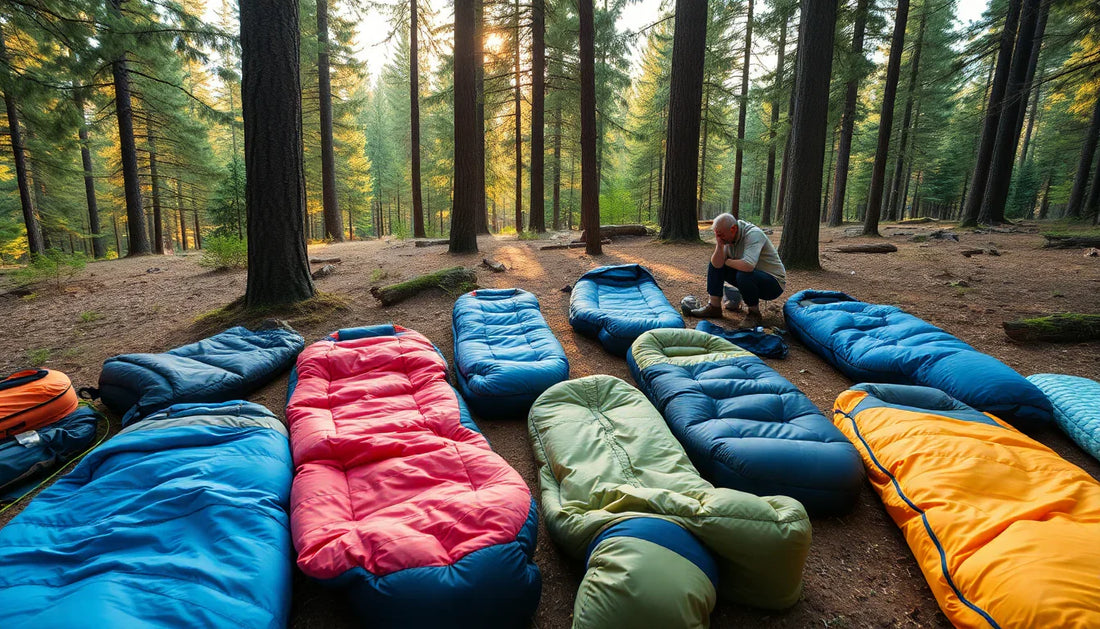
How to Choose the Best Sleeping Bag for Any Season
Share
Choosing the right sleeping bag can make all the difference between a restful night under the stars and a shivering, uncomfortable experience. Whether you're a seasoned camper or just starting your outdoor adventures, selecting the perfect sleeping bag for the conditions is crucial. In this comprehensive guide, we'll explore the key factors to consider when choosing the best sleeping bag for any season.
Understanding Sleeping Bag Temperature Ratings
Sleeping bag temperature ratings are a crucial piece of information when selecting the right bag for your needs. These ratings typically include three numbers: the comfort rating, the limit rating, and the extreme rating.
The comfort rating represents the temperature at which the average woman can sleep comfortably without feeling cold. The limit rating is the temperature at which the average man can sleep without feeling cold. The extreme rating is the lowest temperature at which the bag can provide life-saving warmth, though it's not recommended to use the bag at this temperature for extended periods.
When choosing a sleeping bag, it's essential to match the temperature ratings to the expected weather conditions of your camping or hiking trip. Opting for a bag that's rated for colder temperatures than you'll encounter can provide extra warmth and comfort, but a bag that's not rated for the expected conditions may leave you shivering through the night.
Types of Sleeping Bags: Down vs. Synthetic
The two primary materials used in sleeping bags are down and synthetic insulation. Each type has its own advantages and disadvantages, and the choice often comes down to personal preference and the specific needs of your outdoor adventures.
Down sleeping bags are renowned for their exceptional warmth-to-weight ratio and compressibility. They're lightweight, packable, and provide superior insulation. However, down bags can lose their loft and insulating properties when wet, making them less suitable for damp or humid environments.
Synthetic sleeping bags, on the other hand, are more resistant to moisture and tend to be more affordable than their down counterparts. They maintain their insulating properties even when wet and are generally more durable. However, synthetic bags are typically heavier and bulkier than down bags.
When choosing between down and synthetic, consider the expected weather conditions, your budget, and the level of moisture you're likely to encounter. For dry, cold climates, a high-quality down bag may be the best choice. For wet or humid environments, a synthetic bag may be the better option.
Seasonal Considerations
Sleeping bags are designed for different seasons, and it's essential to choose the right one for the conditions you'll be facing. A 4-season sleeping bag is the most versatile option, as it's designed to provide warmth in a wide range of temperatures, from mild summer nights to freezing winter conditions.
For summer camping, a lightweight, breathable sleeping bag with a lower temperature rating may be sufficient. These bags are often made with synthetic insulation or a lower-fill-power down, making them more suitable for warmer weather.
In colder seasons, a heavier, more insulated sleeping bag is necessary. Look for bags with higher temperature ratings and higher-fill-power down or thicker synthetic insulation to keep you warm in chilly conditions.
For extreme cold weather, specialized sleeping bags designed for winter use may be necessary. These bags feature additional insulation, often with a lower comfort rating to ensure you stay warm in the harshest of environments.
Sizing and Fit
The size and fit of your sleeping bag can have a significant impact on its performance and your overall comfort. Sleeping bags come in a variety of sizes, from regular to long and wide, to accommodate different body types and preferences.
When selecting a sleeping bag, consider your height, shoulder width, and hip circumference to ensure a proper fit. A bag that's too small can restrict movement and limit the insulation's effectiveness, while a bag that's too large can allow cold air to circulate, reducing the overall warmth.
Many sleeping bags also feature adjustable features, such as drawstrings or baffles, that allow you to customize the fit and optimize the bag's insulating properties.
Additional Features to Consider
Beyond the basic temperature ratings and insulation type, there are several other features to consider when choosing a sleeping bag:
- Weight and packability: If you'll be carrying your sleeping bag for long distances, look for lightweight and highly compressible options.
- Insulation and fill power: Down bags are often rated by their fill power, which indicates the quality and loft of the down. Synthetic bags may have different insulation technologies to enhance warmth and moisture resistance.
- Special features: Some sleeping bags come with additional features like built-in pillows, draft tubes, or even integrated sleeping pads for added comfort and convenience.
Recommendations for Beginners
If you're new to camping or just starting to build your outdoor gear collection, the sheer number of sleeping bag options can be overwhelming. Here are a few recommendations to help you get started:
- For a versatile, all-season option, consider a high-quality 4-season sleeping bag with a temperature rating between 20°F and 30°F (-6°C to -1°C).
- If you're on a budget, look for entry-level synthetic sleeping bags that offer good value and basic features.
- For those who prioritize lightweight and packability, a down sleeping bag with a temperature rating around 30°F (-1°C) can be a great choice.
Regardless of your experience level, the key is to choose a sleeping bag that aligns with the specific conditions and activities you'll be engaging in. By considering the factors outlined in this guide, you'll be well on your way to a comfortable and restful night's sleep under the stars.
Conclusion
Selecting the right sleeping bag is essential for a successful and enjoyable outdoor adventure. By understanding temperature ratings, insulation types, seasonal considerations, and fit, you can choose a sleeping bag that will keep you warm, comfortable, and well-rested, no matter the weather or terrain. With the right sleeping bag, you'll be able to focus on the beauty of nature and the joys of camping, rather than worrying about staying cozy through the night.
